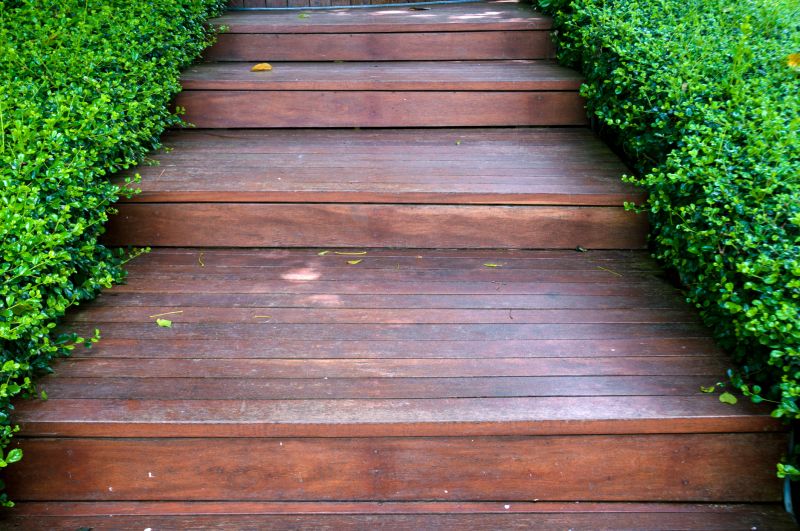Leading Supplies For Successful Staircase Restoration Projects
Find out which products professionals rely on to achieve flawless staircase renovations that stand the test of time.
 Restoring a staircase can significantly enhance the aesthetic appeal and functionality of a home. Whether dealing with worn-out treads, damaged balustrades, or outdated finishes, selecting the right products is essential to achieve a durable and attractive result. Restoration projects often involve a combination of materials and tools designed to repair, refinish, and protect various staircase components. From replacing old handrails to refinishing wood surfaces, the right products can help homeowners and professionals alike bring new life to a staircase.
Restoring a staircase can significantly enhance the aesthetic appeal and functionality of a home. Whether dealing with worn-out treads, damaged balustrades, or outdated finishes, selecting the right products is essential to achieve a durable and attractive result. Restoration projects often involve a combination of materials and tools designed to repair, refinish, and protect various staircase components. From replacing old handrails to refinishing wood surfaces, the right products can help homeowners and professionals alike bring new life to a staircase.
Top Overall Option
Multi-Purpose Staircase Restoration Kit
This versatile restoration kit offers a comprehensive selection of primers, fillers, stains, and sealers suitable for wood, metal, and composite surfaces. Designed for ease of use, it provides all the essential components needed to repair and refinish staircases, ensuring a cohesive and durable finish. Ideal for DIY enthusiasts and professionals seeking a reliable, all-in-one solution for staircase projects.
Types of Products For Staircase Restorations
Wood Stain and Finish
Enhances and protects wooden staircase components, available in various shades and finishes.
Metal Paint and Coatings
Specialized paints for metal balustrades and handrails, providing corrosion resistance and aesthetic appeal.
Wood Fillers and Patches
Used to repair cracks, gouges, and holes in wooden surfaces before refinishing.
Sandpaper and Abrasives
Various grits for smoothing surfaces prior to finishing or painting.
Protective Sealers
Sealants designed to lock in stains and finishes, providing durability against wear and moisture.
Decorative Finishes
Textures, paints, or coatings that add visual interest and style to staircase surfaces.
Handrail Adhesives
Strong adhesives for secure attachment of handrails and balustrades.
Lighting Fixtures
LED or accent lighting options to improve visibility and aesthetic appeal.
Non-slip Treads
Safety-enhancing treads that provide traction and reduce slipping risks.
Staircase Carpet and Runners
Textile coverings that add warmth, style, and safety to staircases.
Balustrade Components
Replacement or decorative balusters, newel posts, and caps for aesthetic upgrades.
Handrail Brackets and Mounts
Hardware for secure installation of handrails and support structures.
Paint Removers and Strippers
Products designed to safely remove old paint or finishes before refinishing.
Cleaning and Degreasing Solutions
Preparatory products to ensure surfaces are clean and ready for finishing.
Fast-Drying Adhesives
Quick-setting glues ideal for small repairs and component attachments.
Popular Choices
Popular for restoring wooden stairs with a variety of shades and finishes.
Widely used for safety enhancement and easy application.
Commonly chosen for refurbishing metal balustrades and handrails.
Frequently selected for repairing surface imperfections in wooden stairs.
Popular for protecting refinished surfaces from moisture and wear.
Used to add visual interest with textured or colored finishes.
Trending for safety and ambiance in modern staircase designs.
Frequently sought for updating or repairing staircase balustrades.
Popular for secure installation of new or existing handrails.
Commonly used for surface preparation before finishing.
A favored choice for adding style and safety to stairs.
Popular for removing old finishes before refinishing projects.
The process may include stripping away old finishes, filling in cracks or gaps, sanding surfaces for smoothness, and applying protective coatings. Modern restoration products are formulated to work on different materials such as wood, metal, and composite surfaces. It is important to choose products that are compatible with the existing materials and that offer long-lasting results. Proper preparation and application techniques are also crucial to ensure the integrity and appearance of the restored staircase.
In addition to functional repairs, aesthetic upgrades are common in staircase restorations. These can involve decorative finishes, stain applications, or textured coatings that add visual interest. Lighting fixtures and new balustrades can further enhance the overall look. When selecting products, consideration should be given to the specific needs of the staircase, such as safety requirements, ease of application, and maintenance needs. With the right approach and high-quality products, it is possible to transform an aging staircase into a stunning feature of any home or building.
Key Buying Considerations
- Material Compatibility: Ensure the product is suitable for the existing staircase materials such as wood, metal, or composite.
- Durability: Look for products that offer long-lasting protection and finish quality.
- Ease of Application: Consider whether the product is suitable for your skill level and available tools.
- Safety Features: For products like non-slip treads or lighting, prioritize safety certifications and standards.
- Finish Type: Decide on the desired look—matte, gloss, or textured—and select products accordingly.
- Moisture Resistance: Especially important for areas exposed to humidity or frequent cleaning.
- Color Options: Choose stains, paints, or finishes that match your aesthetic preferences.
- Drying and Curing Time: Be aware of application times to plan your restoration schedule effectively.
- Environmental Conditions: Some products require specific temperature or humidity conditions during application.
- Maintenance Requirements: Consider how easy it is to clean and maintain the finished surface.
- Budget Constraints: Balance quality and cost to find suitable products within your budget.
- Compatibility with Existing Finishes: Ensure new products adhere well to old finishes if re-coating.
- Safety Precautions: Use appropriate protective gear and follow manufacturer instructions.
- Availability of Accessories: Check if additional hardware or tools are needed for installation or finishing.
- Environmental Impact: While not eco-focused, consider products with low VOCs if indoor air quality is a concern.
This page contains affiliate links. We may earn a commission if you make a purchase through these links, at no additional cost to you.
